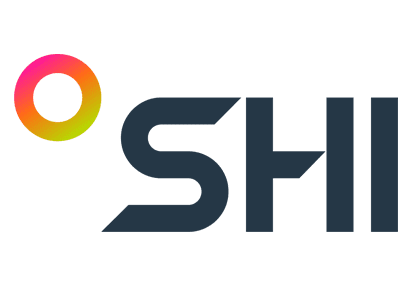5 steps to improve IT asset management in a siloed environment:
Centralize your licensing efforts to close departmental gaps and boost efficiency.

Picture a mid-sized company with disparate teams that each use creative licenses in different capacities. When a graphic designer is hired, the manager purchases a new photo editing license rather than checking to see if there is an unused license available elsewhere in the company. Similarly, the social media manager tracks licenses using a spreadsheet — but occasionally forgets to deactivate licenses immediately when someone on the team leaves.
Then there’s the IT team, which focuses on the security and compliance of all company licenses. However, with no centralized IT asset management team, managing these licenses becomes challenging — and that’s before attempting to track unknown cloud-based Software-as-a-Service (SaaS) subscriptions.
These patchwork setups often result in organizational silos, where department heads make their own software purchases independently.
A siloed — and fragmented — software management structure almost always leads to increased costs, inefficiencies, and compliance risks.
If these licenses were managed across the organization, the design team could repurpose the social media team’s extra license for their new hire. And the licenses may be cheaper — consider the difference between buying a single license versus leveraging the volume discounts that come with a bigger investment.
Fortunately, there are easy steps you can take to improve visibility and efficiency. By advocating for standardized processes, you can help reduce silos and transition to a more integrated IT asset management (ITAM) approach.
Step 1: Establish ITAM responsibility
ITAM plays a vital role for organizations of all sizes in compliance risk reduction, software spend optimization, and effective asset management.
To strengthen your position, begin building a cross-functional ITAM team and implementing clear processes and policies. With these measures in place, your organization will benefit from improved cost management, enhanced security, and better decision-making capabilities.
Step 2: Track and manage IT assets
For ITAM to be successful, visibility into all software spending is essential. Regardless of which departments are making the purchases, you must have a clear understanding of what you’ve acquired to understand your organization’s overall licensing position. How are you tracking software purchases? You should not only be logging the appropriate purchase documentation but also ensuring the allocation of these purchases to the correct department.
Maintain an installed software inventory
Do you currently know where and to what extent your software is deployed? This is where a software inventory tool comes in. These tools provide comprehensive oversight of your software assets, which is particularly crucial in siloed environments.
However, tracking inventory is just one piece of the puzzle. While a software inventory tool focuses on tracking installations, a software asset management (SAM) tool manages the entire lifecycle of software assets – from procurement and usage to renewal and retirement. SAM tools optimize costs and improve compliance.
By leveraging both tools together, ITAM teams gain an overarching view of their software environment. This dual approach allows for smarter renewals, upgrades, and discontinuations.
Step 3: Leverage purchasing power
In siloed environments, departments can only leverage their own license count for discounts. This approach prevents organizations from leveraging volume discounts, meaning each department pays more per license than if they purchased collectively. In this scenario, unused licenses often go unnoticed and unshared, leading to additional waste.
Consider again what happens in our theoretical organization when a social media specialist departs the same week a graphic designer is hired. In a siloed environment, that social license now sits idle while the design team invests in another one. By improving visibility and coordination, organizations can better optimize their IT spending and prevent some of these inefficiencies.
Step 4: Optimize license management and reduce overages
This is a self-explanatory flaw in siloed environments — when two departments purchase the same software, each will only buy enough to cover its independent needs without regard for the bigger picture. But allowing individual departments to control software licenses often leads to surpluses and a lack of visibility into actual needs, ultimately resulting in overspending. By tracking and allocating licenses based on actual usage rather than departmental ownership, organizations can identify waste and highlight opportunities for cost savings.
Track license allocation
Avoiding overages through proper management is critical to maintaining a strong licensing stance. Despite the aforementioned downsides, departments may want to retain control of license allocation themselves to ensure rapid software provisioning. This can work — but it requires strict oversight to maintain accurate records of license usage and ownership. If an organization chooses to operate this way, the ITAM team must remain responsible for verifying and maintaining ownership records to prevent discrepancies.
Rationalize software use
ITAM teams should also focus on software application rationalization to cut down on sprawl. This process first involves evaluating existing applications, identifying redundancies, and communicating known software vulnerabilities to senior leadership and across departments to facilitate necessary risk mitigation actions.
Once this phase is complete, ITAM can streamline and promote standardized tools, reducing inefficiencies that arise from using multiple products for similar tasks. Remember, though: while application rationalization is beneficial, its success relies on effective license management.
Step 5: Prevent non-compliance
This is the trickiest piece to resolve. To ensure compliance, ITAM teams and departmental purchasers must align on license terms and deployment strategies to build a centralized software management system. And it is equally important to understand that licenses belong to the organization as a whole, not individual departments.
If an audit letter arrives, it will be up to the ITAM team to respond. By proactively managing licenses, organizations can mitigate the risks of non-compliance and the associated financial penalties.
Maximize your software value with SHI
Effective software management is essential for minimizing risks and managing costs. By consolidating all your software management efforts, you can streamline processes, enhance security, and achieve significant savings.
At SHI, we are dedicated to helping you navigate the complexities of a fragmented ITAM landscape. Our experts will identify improvement opportunities and help you implement best practices, offering fresh insights and specialized knowledge to accelerate your transition to a more efficient ITAM system.
We offer a comprehensive range of solutions, including:
- ITAM maturity assessments: We conduct thorough evaluations to identify gaps and areas for improvement in your IT asset management practices.
- Process optimization: We analyze your current workflows and identify opportunities to streamline processes, reduce redundancies, and increase efficiency.
- Cost management strategies: Reduce unnecessary spending and maximize your budget. By analyzing your software usage and expenses, we identify cost-saving opportunities and implement changes to help you get more value from your investments.
- Compliance management: We help you stay aligned with legal requirements and safeguard your IT assets.
Ready to elevate your software management experience? Reach out to our ITAM experts today and start your journey towards efficiency and savings.




